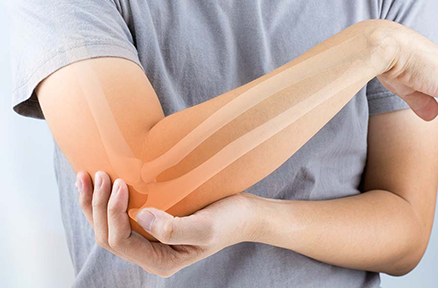Repeated stress from 300-pound linemen likely resulted in re-injury after his summer surgery on a previously herniated disc
The Houston Texans were dealt an incredibly difficult blow to absorb when news broke that defensive end J.J. Watt will be placed on injured reserve for a herniated disc in his low back. Watt had surgery over the summer to correct the initial injury to the disc, which he suffered late last season. On September 30, he had a second surgery and will likely be ruled out for the rest of the season.

This was the first time Watt has missed significant time in his career due to injury. And while we don’t know all of the specific details, a second injury involving the disc — especially one that requires this much time off — means there is significant cause for concern around Watt’s long-term prognosis.
What is a herniated disc?
The intervertebral discs (IVDs) are cartilage cushions that sit in between the individual vertebrae of the spinal column. The IVDs provide shock absorption in the spine and help to act as stabilizers against impacts that we receive during walking, running or other athletic activity.
The disc is made up of two parts: An outer cartilage ring, called the annulus fibrosus, and an inner ring that is more fluid-like, called the nucleus pulposus. The annulus stabilizes the intervertebral joint, while the nucleus pulposus provides shock absorption.
The most common injury to the IVD is a herniation of the disc. Most commonly this involves a piece of the disc herniating, meaning the edge of the disc bulges beyond the alignment of the spinal column. Usually, this herniation is toward the back, into the spinal canal, which causes a variety of symptoms, including:
- Sharp low back pain
- Numbness
- Burning or tingling into the leg
- Weakness in the lower back or extremity.
How do disc herniations occur?
Most commonly, disc herniations occur as the result of aging. The discs lose the water they’re made of overtime and will thin out or become compressed, creating the herniation. However, they can also occur acutely, most commonly due to repetitive compressive forces at the spine.
This is likely what occurred in Watt’s case. Defensive linemen are prone to facing repeated compressive force to the low back, as they attempt to resist 300-pound offensive linemen trying to push them back. This can cause excess amounts of extension on the spine, which results in high-impact shearing forces that can force a piece of the disc to protrude into the spinal canal.
How is J.J. Watt’s injury treated?
Usually, conservative treatment of rest, physical therapy and anti-inflammatory regimen is the first line of treatment for a disc herniation. The hope is that by calming down the inflammation and working on core stabilization, the disc herniation will not continue to put pressure on the spinal cord.
But in a case like Watt’s, surgery is an option, where the herniated piece of disc is removed, or a piece of bone called the lamina is removed to take pressure off the spinal cord. This is usually enough to relieve the pain, and that’s what the Texans attempted to do with Watt this summer.
Unfortunately, in instances where athletes attempt to continue competing after a disc herniation, the disc is vulnerable to re-injury. The herniation can recur or become worse with the right compressive force. In this instance, Watt will undergo another surgery, likely to clear out any further herniation or perform a removal of the lamina of the affected vertebrae.
However, even if he feels 100 percent after this, he’s still at risk to re-aggravate the injury due to the nature of his sport’s demands. The idea that Watt will be able to return to his All-Pro form is in serious doubt.



